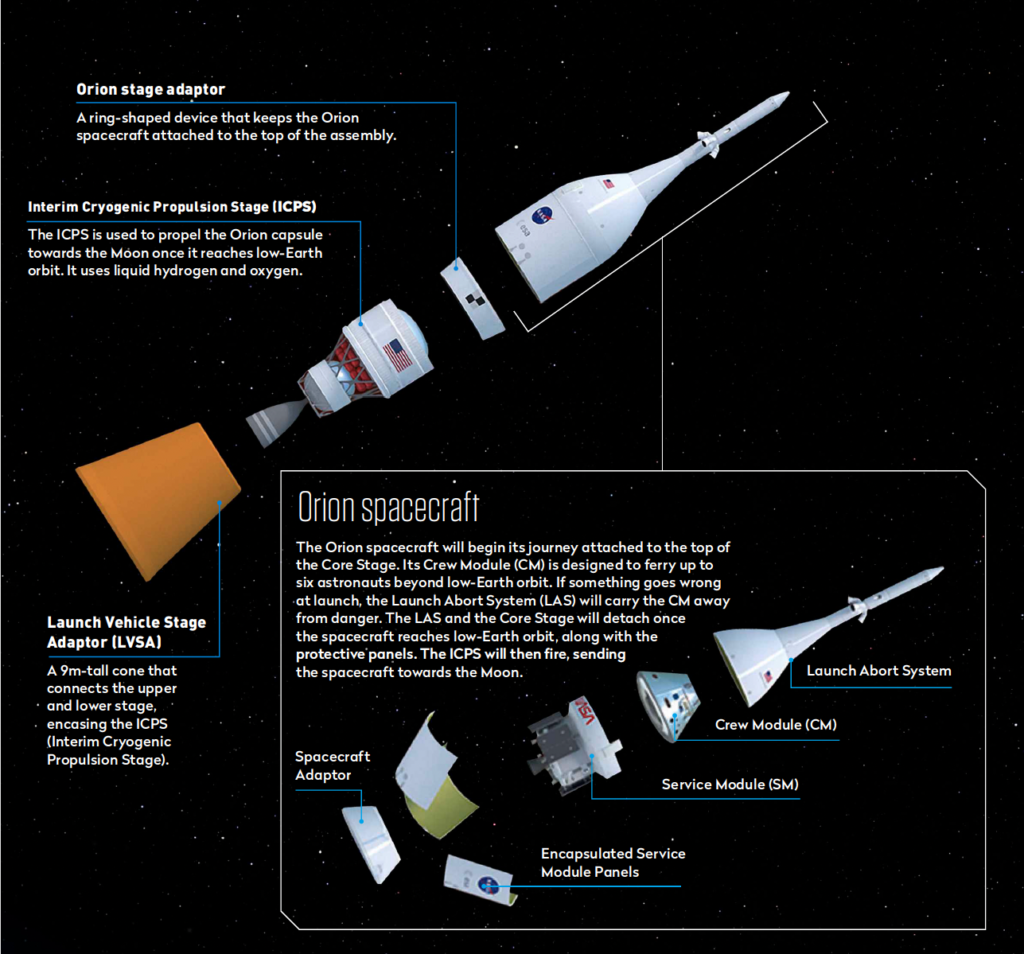NASA’s newest rocket, the Saturn V-sized Space Launch System, will take human exploration beyond low-Earth orbit once more


When the Space Shuttle programme shut down in 2011, NASA was left unable to launch heavy payloads into orbit. But that will soon change as the agency prepares to launch its Space Launch System (SLS) in March or April of this year. The SLS will eventually carry payloads of up to 45 tonnes to lunar orbit and is a key part of the Artemis programme, NASA’s endeavour to send the first woman to the lunar surface by 2025.
Initially, the SLS’s first test launch was due in 2016, but the system proved more challenging than expected. Even after six years’ delay, the 2022 SLS is not the final version. The first three launches will use the Block 1 design shown here, followed by a Block 1B version with a more powerful upper stage, before being replaced by a Block 2 design with even more thrust. But even in Block 1, SLS will produce 15 per cent more thrust than the Saturn V.
Currently, NASA’s budget allows one SLS a year to be produced at most. The first three have all been earmarked for the Artemis programme and, with a successful test this spring, NASA will begin to stage increasingly ambitious deep space missions – both human and robotic – to the Moon, Mars and beyond.
How the SLS measures up

SLS Block 1 by numbers
Height: 98m Weight: 2.6 million kg
Payload weight to low-Earth orbit: 95 tonnes
Payload weight to the Moon: 27 tonnes
Thrust: 39 million newtons
Solid fuel: Polybutadiene acrylonitrile
Liquid fuel: Oxygen and hydrogen
Top speed: 39,500km/h